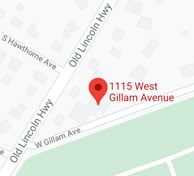A2L that has gained significant attention in the HVAC industry. It arrived on the market as a potential replacement for R410A due to its superior performance and environmental benefits. This blog will cover everything you need to know about the arrival of A2L refrigerant in the United States.
Understanding A2L Refrigerant
Low global warming potential
One of the key features of A2L refrigerant is its low global warming potential (GWP), which is approximately one-third of that of R410A. This means that A2L has a much lower impact on climate change, making it a more environmentally friendly option.
Improved energy efficiency
A2L refrigerant offers improved energy efficiency compared to its predecessors. It has better heat transfer properties, allowing HVAC systems to operate more efficiently and reduce energy consumption.
Understanding the properties and benefits of A2L refrigerant is crucial for HVAC professionals and consumers alike. By embracing this new refrigerant, they can contribute to a more sustainable future while enjoying the advantages it brings to the market.

Advantages Over R410A
A2L refrigerant has several advantages over R410A that have contributed to its growing popularity in the market. As mentioned earlier, A2L has a lower GWP, making it a more environmentally friendly choice. This is particularly important in light of increasing concerns about climate change and the need for greener alternatives.
Reduced utility bills
A2L refrigerant offers improved energy efficiency. Its superior heat transfer properties allow HVAC systems to operate more effectively, resulting in lower energy consumption and reduced utility bills for consumers.
Higher refrigeration capacity
Additionally, A2L has a higher refrigeration capacity, meaning it can provide better cooling performance compared to R410A. This can lead to increased comfort levels and improved air quality in indoor environments.
Regulatory Changes and Bans Around Refrigerant
In recent years, there have been regulatory changes and bans relating to certain refrigerants, including R410A.
One of the key drivers behind these changes is the need to reduce greenhouse gas emissions and mitigate climate change. R410A, being a hydrofluorocarbon, has a high GWP, which contributes to global warming.
As a result, some countries and regions have implemented bans or restrictions on the use of R410A in new HVAC systems. These regulations aim to encourage the adoption of more environmentally friendly alternatives, such as A2L refrigerant.
Environmental Impact of Refrigerant
The environmental impact of refrigerants has become a significant concern in recent years, leading to the development and adoption of more sustainable options like A2L refrigerant.
A2L has a significantly lower GWP compared to R410A, which means it has a reduced potential to contribute to global warming. By using A2L in HVAC systems, the release of greenhouse gases can be minimized, helping to mitigate climate change.
Furthermore, A2L has a shorter atmospheric lifetime, which means it remains in the atmosphere for a shorter period compared to other refrigerants. This further reduces its environmental impact and supports efforts to create a more sustainable future.
By choosing A2L refrigerant and understanding its environmental benefits, HVAC professionals and consumers can play a vital role in reducing the carbon footprint of cooling systems and protecting the planet for future generations.
The Future of A2L Refrigerant
With increasing concerns about climate change and the need for more sustainable solutions, A2L has positioned itself as a viable alternative to high-GWP refrigerants like R410A.As regulatory changes and bans come into effect, the demand for R32 is expected to rise.
In 2025, we can expect to see further advancements in A2L technology, including improved system designs and increased availability of A2L-compatible HVAC equipment as the United States starts to adopt the use of A2L refrigerant.
If you live in the Delaware Valley/Greater Philadelphia area and would like to find comfort within your home, visit our website or give us a call at 215 - 245 - 3200 to learn more.





